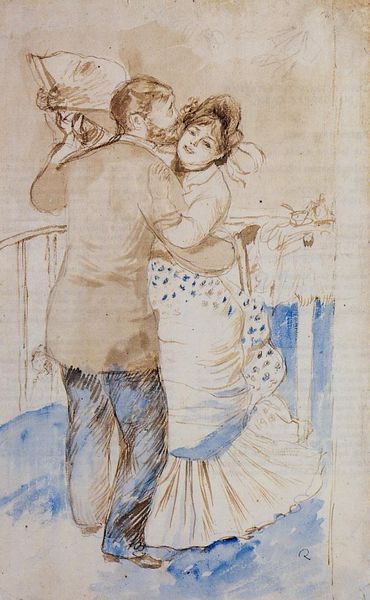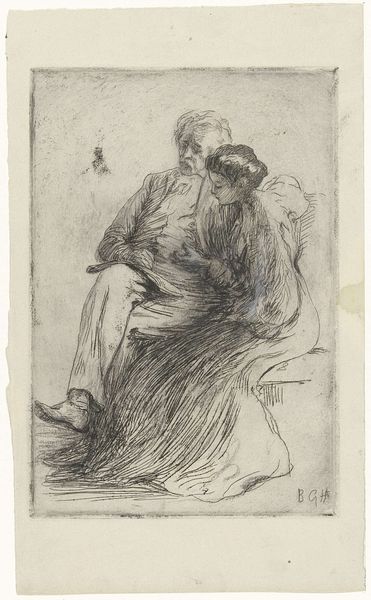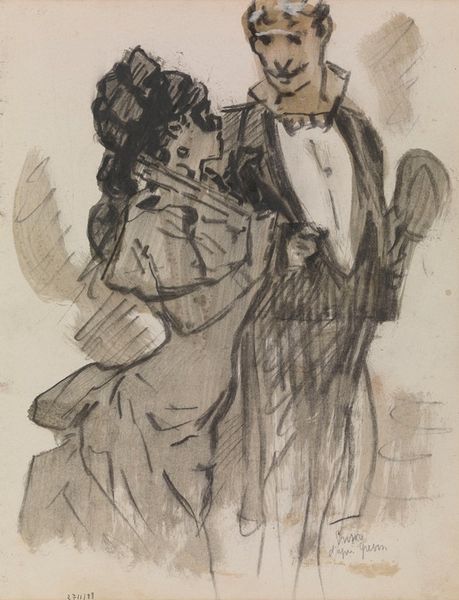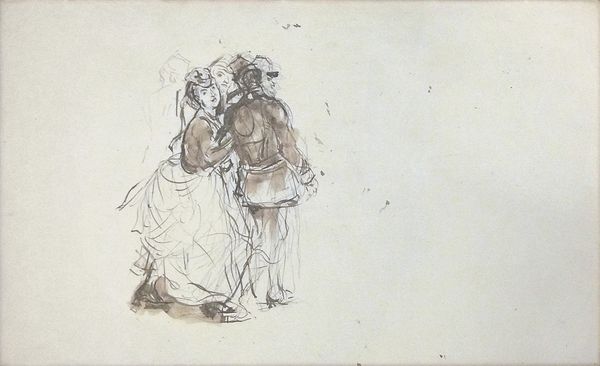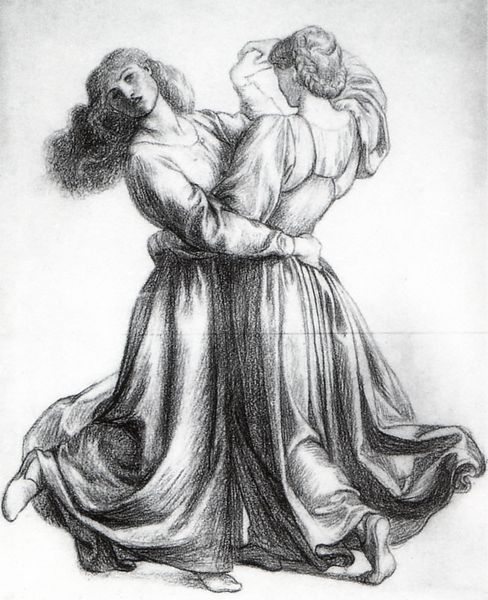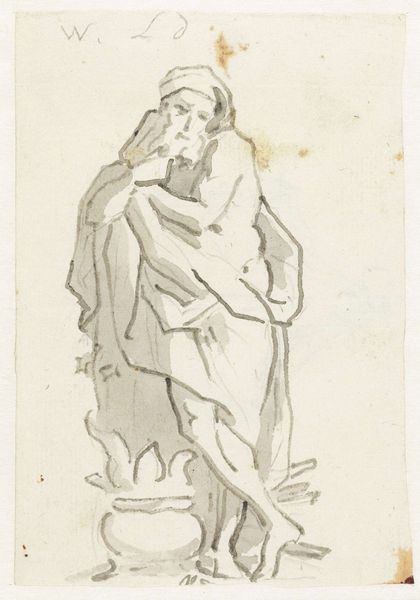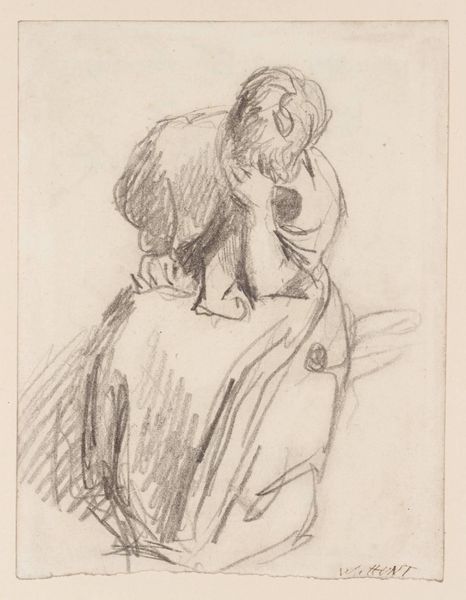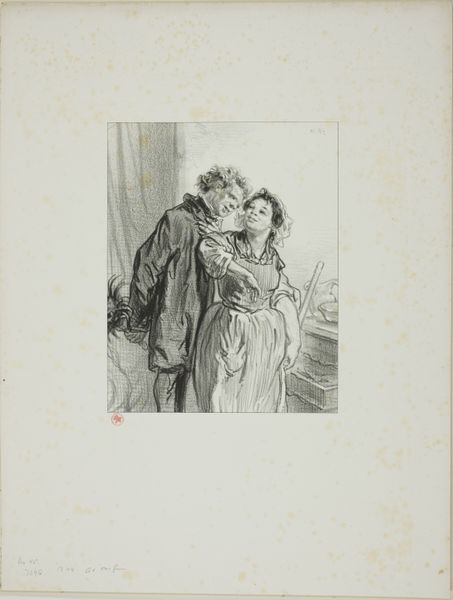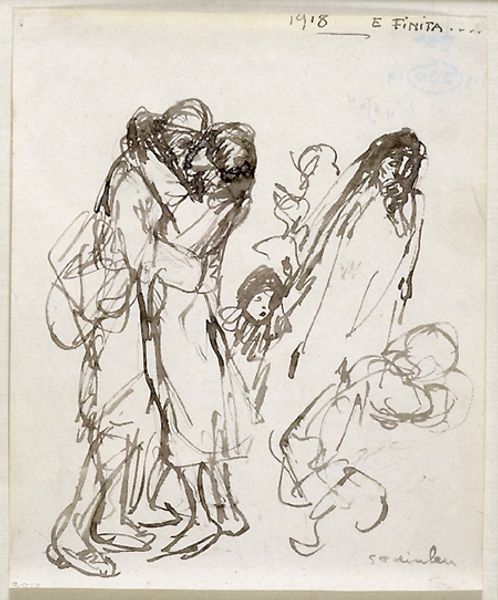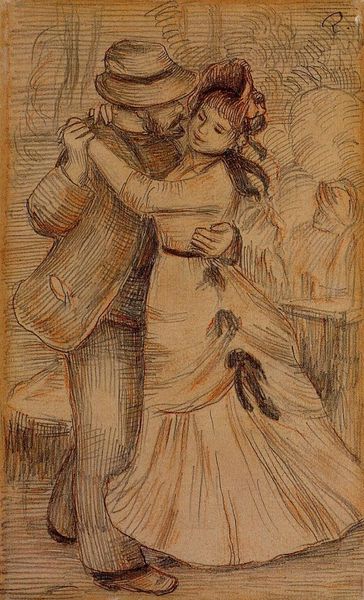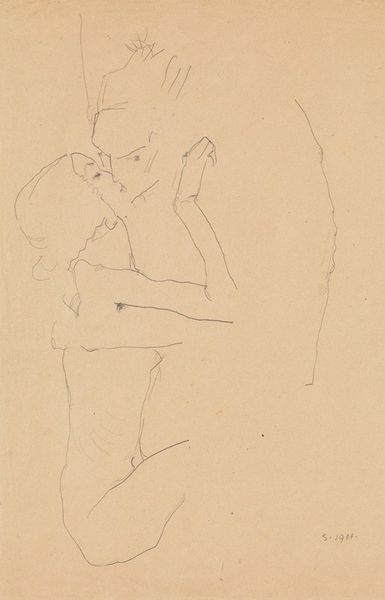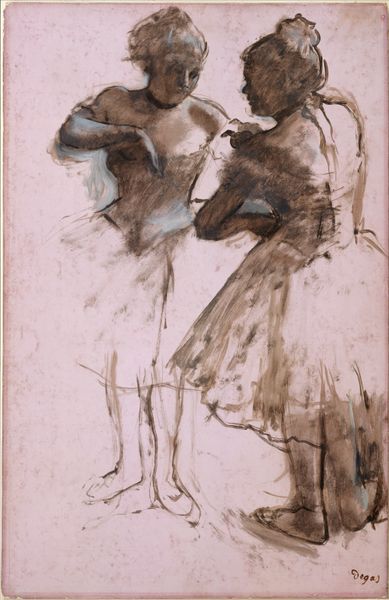
Copyright: Public Domain: Artvee
Curator: Welcome! Here we have Pierre-Auguste Renoir's "Dance in the Country," painted in 1883, a watercolor on paper. Editor: Well, it's certainly lively! You immediately feel caught up in the music, or maybe it's just their energy. It seems so fleeting, like capturing a moment only seen out of the corner of your eye. Curator: Absolutely. It captures that ephemeral quality characteristic of Impressionism, even in this preliminary work. It also resonates with the rise of leisure culture in the late 19th century, where public spaces for dance and socializing became increasingly important. Editor: I get this sense of the bohemian from it. You can see the couple totally lost in their movements, yet other scattered facial drawings sit eerily alone near the painting's right edge as if to say everyone needs a dance partner. What is going on with that!? Curator: Those disembodied faces are likely exploratory sketches by Renoir, offering insight into his artistic process. Some have argued this piece speaks to the evolving roles of women in society and the artist's own vision. The original painting that he derived it from received conflicting remarks in its original moment in French Salon society. Editor: Fascinating. Look at how loosely the details are handled - yet there's such warmth, particularly in how the light seems to catch the woman's dress. The textures of her patterned clothing compared with his tailored coat—lovely contrast. Curator: Renoir was known for his skilled handling of light and color, aiming to evoke emotion and fleeting beauty through those elements. This particular style and artwork captures the romantic idealism associated with French Romanticism but is distinctly Impressionist in style. Editor: It definitely leaves a lingering feeling, this little dance frozen in time. One is moved to think more deeply about those historical dance movements as well as the contemporary possibilities for human affection. Curator: Exactly. Hopefully it gives visitors insight not just to one masterwork but into society's views of romantic encounters, pleasure, and play throughout the Impressionist period. Editor: It gets my feet tappin'.
Comments
No comments
Be the first to comment and join the conversation on the ultimate creative platform.
